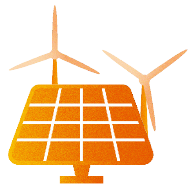Polysilicon
Ultrapure Silicon for Solar Power
Polysilicon with 99.9999999 percent purity – WACKER is making a significant contribution to the clean energy of the future. A semiconductor is the most important starting material for both computer chips and solar cells. Turning quartz sand into a photovoltaic system involves many technically sophisticated steps, which determine how efficiently the energy from the sun will be converted. In this way, WACKER, a global market leader with over 60 years’ experience in manufacturing polysilicon, is paving the way for the renewable energy revolution.
Early each morning, Jim Tharp drives to work through a picturesque landscape. The Hiwassee River winds around the town of Charleston and past the WACKER plant, before flowing into the Tennessee River. In this rural Appalachian region, hydropower dominates; solar energy played hardly any role for many years. But ever since WACKER opened its polysilicon site in Charleston, USA, the solar age has arrived there, too.
In Charleston, Jim Tharp is in charge of producing hyperpure silicon – one of the linchpins of our carbon-neutral future. WACKER’s 2020 solar silicon production alone will, over the lifetime of the resulting solar modules, offset around 450 million metric tons of carbon dioxide emissions. That is equivalent to 30 years of carbon emissions for a city the size of Hamburg.
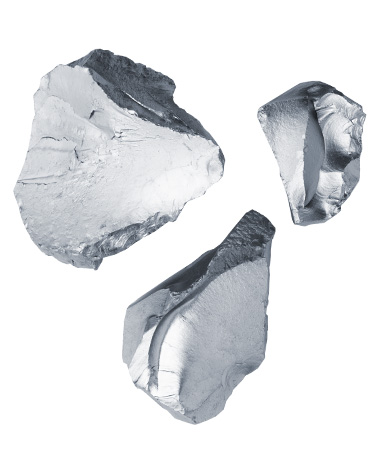
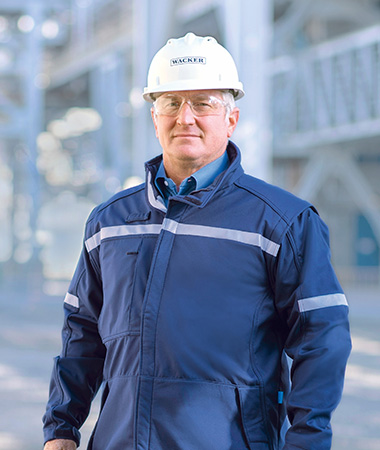
Global climate protection is increasing the need for power from renewable energy sources. In a defossilized future, electrical industrial furnaces, e-vehicles and heat pumps will need more and more green electricity. The International Energy Agency (IEA) sees solar energy as the “new king.” From 2022, it will break records year after year as storage technology makes huge advances and the costs for solar electricity fall faster than any other kind of energy generation. In some countries, electricity from new solar installations will soon be cheaper than electricity from existing coal-fired power stations. The production of a solar cell currently recoups the energy input after about one year.
This is also partly due to continual improvements in cell efficiencies together with falling manufacturing costs. Jim Tharp and his colleagues are part of this growth story, since ever more efficient cells demand ever purer silicon.
WACKER is one of the pioneers in the manufacture of polysilicon. The Munich-based chemical corporation has been researching and developing the manufacture of hyperpure polysilicon since 1954, for example for transistor radios, which superseded tube radios in the 1960s. What’s more, WACKER has produced special polysilicon for the solar industry since 2000, first in Burghausen, in Nünchritz since 2011 and, since 2016, in Charleston.
WACKER has boosted product quality and productivity by automating and optimizing its processes. “WACKER’s production is the best and the most stable,” Tharp states proudly. The Group’s biggest advantage is its integrated production system, in which byproducts and waste are recycled into other products.
In addition, production is almost entirely electrified. Sophisticated energy management reduces the energy consumption and thus the carbon footprint of the polysilicon. For example, the waste heat generated during cooling the polysilicon generates steam for distillation. In total, therefore, WACKER’s polysilicon production only generates half as much carbon dioxide emissions as some of its competitors.
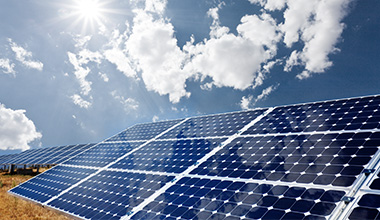
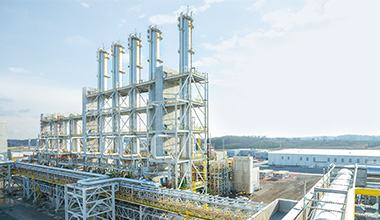
An Exceptional Material
The polysilicon made in Charleston is sold not only to the solar industry but in particular to the semiconductor market. However, for the latter, it has to be even purer. “We are talking about impurities of the order of a trillionth part, which we can measure and control,” he stresses. Due to its high quality, the material is therefore highly sought after on the current tight market among manufacturers of semiconductor wafers.
If you hold one of the silvery shimmering chunks in your hand, it’s not at all obvious how irreplaceable this material is for the sustainable energy revolution and digitalization. Though the starting material itself is abundantly available. Silicon is the second most plentiful element in the Earth’s crust, where it is found as the compound silicon dioxide, for example in quartz sand.
Turning quartz sand into a solar cell is a long and complicated process. First the quartz sand is heated to 2,100 degrees Celsius in an arc furnace and purified in several steps. The gray lumps of metallurgical-grade silicon already consist of 99 percent silicon atoms.
Pure, Purer, WACKER
But 99 percent is nowhere near enough for semiconductors or solar cells. The metallurgical-grade silicon must be made much purer. This is where Jim Tharp in Charleston steps in. He and his team turn the silicon lumps that are delivered in containers into a high-tech raw material, the silvery shimmering ultrapure polysilicon. “It all depends on achieving maximum purity and quality – every day, every hour,” he says.
To achieve this, the silicon in Charleston passes through a series of highly complex processes. First it reacts with hydrogen chloride to convert it into liquid trichlorosilane. The liquid is then efficiently purified in large quantities in tall distillation columns. WACKER has perfected this process like no other company. After distillation, the concentrations of critical impurities lie in the range of parts per trillion (ppt). One ppt corresponds to a concentration of 10 grams of sugar in ten billion liters of water – as much as can be held by one million tank trucks. It is the purest material ever to be industrially manufactured.
The ultrapure distilled trichlorosilane is heated to about 1,000 degrees Celsius and passed over thin silicon rods. The trichlorosilane decomposes and the polycrystalline silicon is deposited on the surface of the rods. Subsequently, it is crushed to create the Charleston plant’s end product: silvery shimmering polysilicon.
An Appetite for Chips: Semiconductor Polysilicon
When it comes to manufacturing semiconductor-grade polysilicon, WACKER is one of the pioneers and has many decades of experience in this field. The process is similar to that for solar-grade silicon, but even more challenging, since considerably higher purities have to be obtained. This polysilicon is required for microchips. They are the key technology for the smart connected world. The purer the polysilicon, the smaller, faster and more powerful are the microchips. The Munich-based chemical group is a global market leader in this segment. Almost every second microchip in the world – whether in an oven, cellphone or car – was manufactured with polysilicon from WACKER.
Making the Solar Roof
From Charleston, the hyperpure silicon still has a long journey ahead before it does its job as a computer processor or can be installed on the roof of a house to convert solar energy into electricity. Two to three containers a day leave the plant, says Tharp. They are shipped to Asia, for example, where most solar and semiconductor wafer manufacturers are based. These companies melt the polycrystalline silicon by heating it to a few degrees above its melting point, which is a good 1,400 degrees Celsius. Then a small silicon seed crystal is dipped into the liquid, and slowly drawn out of the melt over a great many hours. As the polysilicon solidifies, it grows on this crystal to form a tall and extremely heavy monocrystalline silicon ingot. The several meters-long monocrystal is sawn into wafers for the high-efficiency monocrystalline solar cells. The wafers are processed into individual solar cells and finally assembled into modules. The modules themselves can be combined as required: from roof installations through to solar farms in the desert.
A Glittering Future
Even though Jim Tharp hasn’t got a solar array on his roof yet, photovoltaics is on course for rapid growth in his home country. U.S. President Joe Biden reckons that a tenfold increase in solar power is on the cards in the next 15 years. By 2050, almost a half of all electricity could be generated with solar power. In other parts of the world, too, the auspices are good for photovoltaics becoming the most important energy source of the future. 2020 saw world record growth of 22 percent – good prospects for energy from the sun and polysilicon as the most important raw material.

